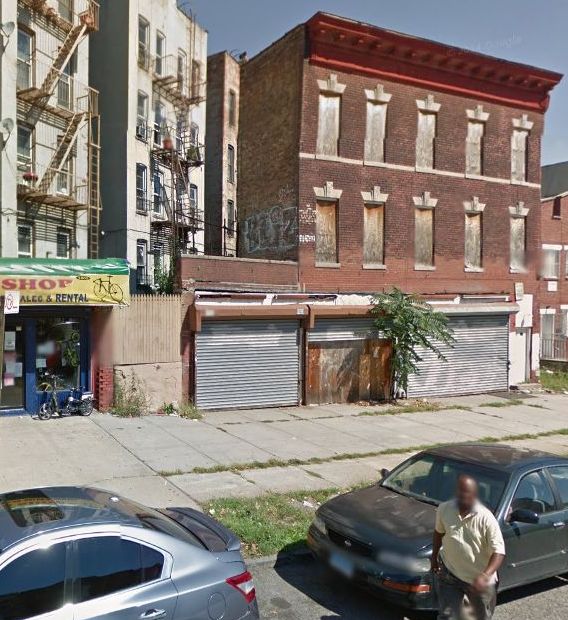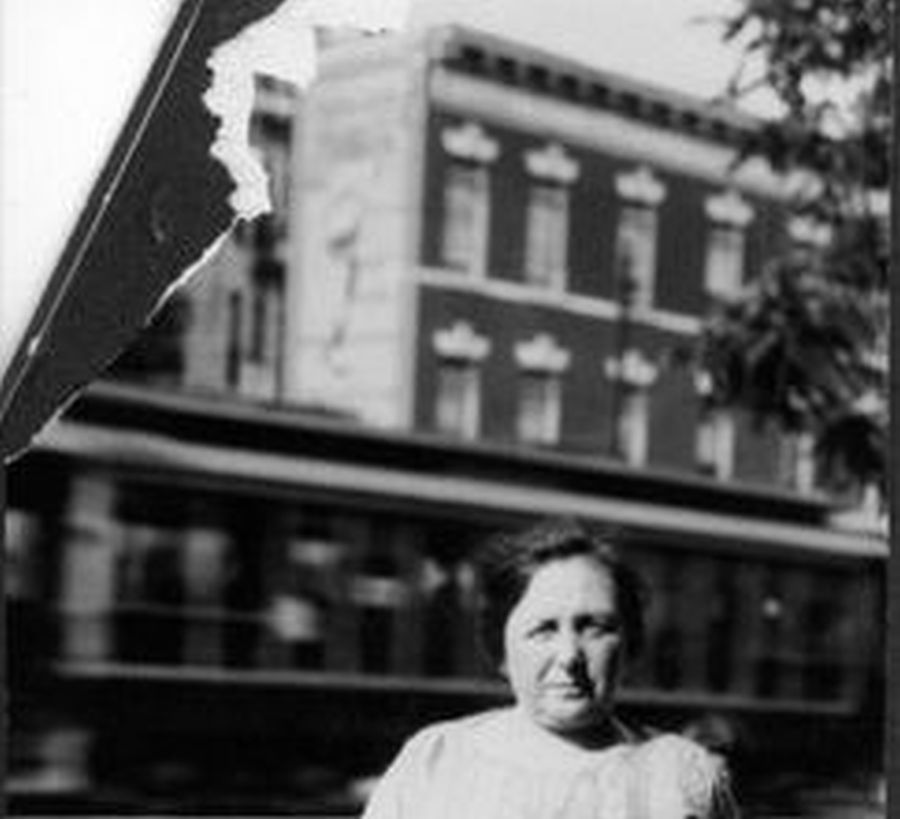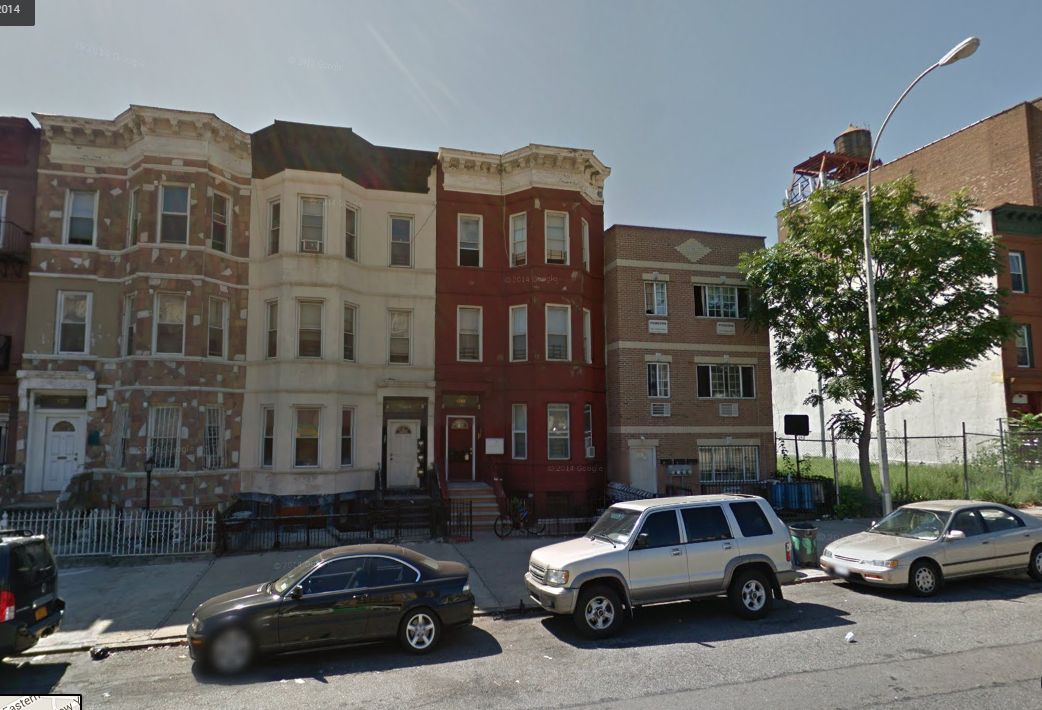WHERE WAS THIS PICTURE TAKEN? PT. II (1924)
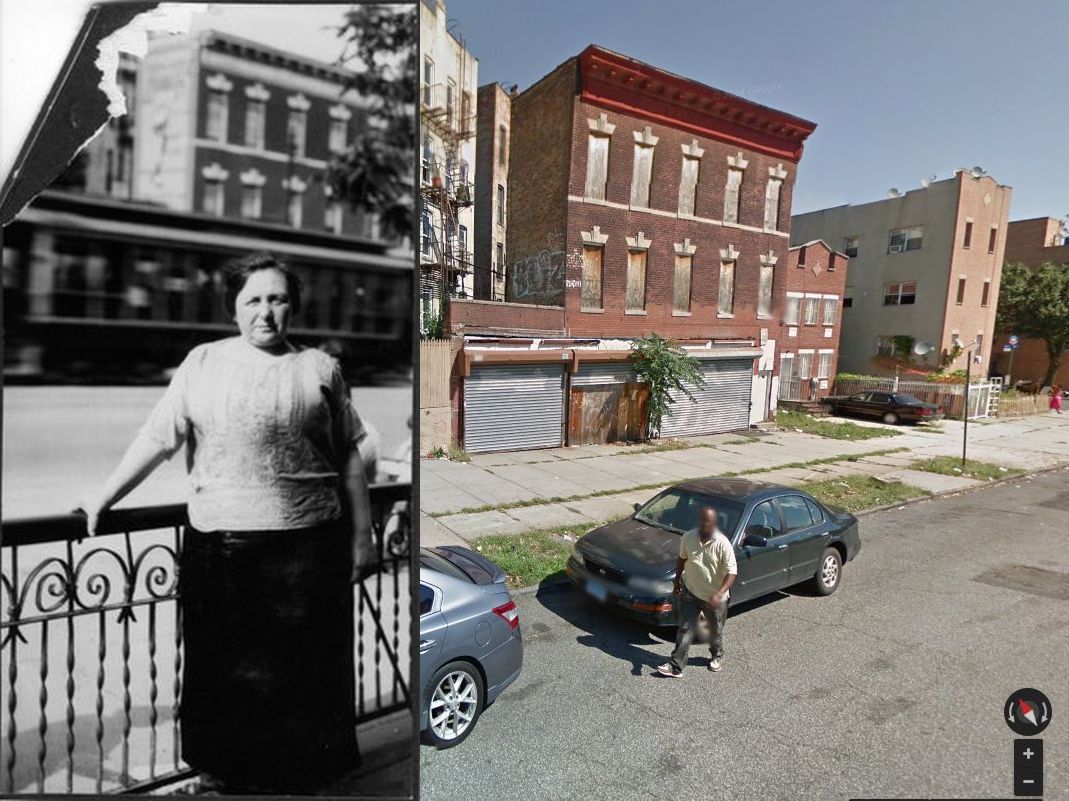
Junior Brownstone Detectives!
In last week’s episode, “Where Was This Picture Taken, Pt. I,” we challenged you to a task of monumental proportions: “Study an historic photograph and determine where in Brooklyn it was taken.”
As you’ll recall, while the photograph had some distinguishing elements in it, the location of the subject was not immediately discernible. Each of the elements therein could have been found within any of the sections of the borough.
We decided, though, that studying the elements of the picture itself, along with just a bit of information about the individual within the picture, we might determine, with great specificity, exactly where the photograph was taken.
Today, we are going to review some sources that the Brownstone Detectives use on a daily basis to solve everyday dilemmas such as this one.
AN HISTORICAL DETECTIVE’S TOOLKIT
Where do we begin when attempting to determine the Brooklyn location of an old photograph?
There are a number of resources that can be of use in any mystery such as this. For the particular one we’ve presented you with, though, we will list the resources that we often use and show you how to use them in attempting to find a solution:
 Ancestry.com – If you have a name connected with the subject in the photo, as we did, this is always a good place to begin your search. At Ancestry.com, using the search function, place any names that you have into the engine, and then see what pops up. With less familiar names you’re more likely to have greater success. The trick with this engine is culling out every other person with the same name in the entire world by 1) estimating a date of birth for your subject (so that the engine has a general time-frame within which to search) and 2) entering a place she lived by clicking “Lived in” and entering “Brooklyn” in the drop down menu, so as to keep your search within the confines of Brooklyn.
Ancestry.com – If you have a name connected with the subject in the photo, as we did, this is always a good place to begin your search. At Ancestry.com, using the search function, place any names that you have into the engine, and then see what pops up. With less familiar names you’re more likely to have greater success. The trick with this engine is culling out every other person with the same name in the entire world by 1) estimating a date of birth for your subject (so that the engine has a general time-frame within which to search) and 2) entering a place she lived by clicking “Lived in” and entering “Brooklyn” in the drop down menu, so as to keep your search within the confines of Brooklyn.
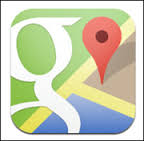 Unified Census Finder – If you don’t have a name, but you DO have an address, this search engine helps you to quickly-ish find the census records for your block for many of the Federal Census years (from 1880 to 1940).
Unified Census Finder – If you don’t have a name, but you DO have an address, this search engine helps you to quickly-ish find the census records for your block for many of the Federal Census years (from 1880 to 1940).
Google.com – When you have an address, type it into google.com. When it returns a map address to you, click on the “Street View” so that you can visually scan the street and attempt to find the location you are searching for.
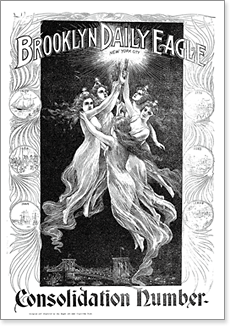 New York Public Library Maps – When you have a number of elements within your photograph that stand out, you know a general area where you suspect the photograph to have been taken, or you know the street but maybe not the address, searching the old insurance maps online at the New York Public Library can help you to whittle down that location. Check the years that you are looking for, click on the maps, and then look for the Index at the beginning of the series. The index will tell you which page your street address will be listed.
New York Public Library Maps – When you have a number of elements within your photograph that stand out, you know a general area where you suspect the photograph to have been taken, or you know the street but maybe not the address, searching the old insurance maps online at the New York Public Library can help you to whittle down that location. Check the years that you are looking for, click on the maps, and then look for the Index at the beginning of the series. The index will tell you which page your street address will be listed.
Brooklyn Daily Eagle Archives – This website is a veritable treasure trove for Brooklyn historical researchers (whether you are looking for something specific or not). Just type in a name, a place, a search term – ANYTHING really – and then start reviewing the results.
HOW WE FOUND OUR MRS. BILSON
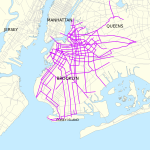
So, we moved on temporarily to another source (not listed above) – checking a number of websites listing streetcar lines in Brooklyn in the 1920s – this source would be useful once we inevitably began to find addresses that might have been Bilson’s – using this knowledge we could easily discount street addresses that did not fall on streetcar lines.
Next, on a whim, we entered Bilson’s name into Google.com to see if it would provide us any information helpful in our search. Up popped some information about her husband, Harris, which we culled and decided to use in another attempt on Ancestry.com.
With this additional information, we updated our search in an effort at finding that elusive survey with the right address. This time we had a little more success. A few relevant censuses popped up – one from 1920 and the other from 1930.

Opening the 1930 survey first, we saw a Harris and Sarah F. Bilson, living with their children, Bernard L. and Arthur. The family was living in that year at 1798 St. Johns Place, along with two other families. (The children and Sarah had been born in England, while Harris was from Lithuania. Everyone else within the building, incidentally, was also from Eastern Europe. Harris worked in “retail men’s clothing” as a “tailor,” Bernard was a “compositor” for an “advertising agency,” and Arthur worked as a “publicity agent” in the theatre business.)
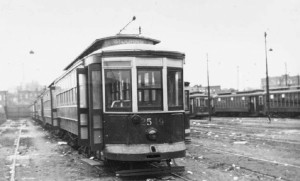
So far, so good.
Now, with the address discovered on Ancestry, we were set to try and find our building. Using that street address, we entered it into Google.com, clicked “Street View” and up popped a common everyday-looking Brooklyn city street scene.
Wheeling around to take a look across the street, though, we saw the following building. Comparing it with the building in the picture of Mrs. Bilson, we’ve determined – with relative certainty – that this was the background of her photograph.
.-.
Bingo!
Now to determine the vantage point from which the photograph was taken, where Mrs. Bilson lived with her husband, Harris, and their children, Bernard and Arthur.
So, back to Google Maps where we initially discovered our photographic background. Pivoting around to see the opposite side of the street where Mrs. Bilson had been standing in the photograph, we were presented with this following scene:
One of these buildings was certainly 1798 St. Johns Place. But which one?
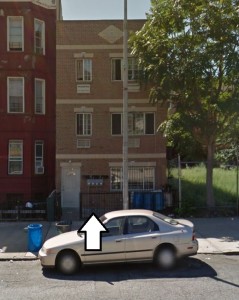
Using the zoom lens on Google Maps, we were able to discern that the tall red building was 1800 St. Johns Place and that the numbers went up as you moved to the left.
This led us to believe that the new-ish “Fedders” building next door to it – on the right – was 1798 St. Johns Place.
To help us to establish this fact without having to actually visit the location, we entered this same address into the City’s Department of Buildings “Building Information System,” and we were able to see that a building was being constructed in 2005 at that location.
Thus, we had our subject…
…and where Mrs. Bilson stood the day her photograph was snapped.
———————————————————————————————————————–
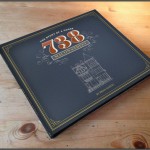 The story you have just read was composed from extensive historical research conducted by The Brownstone Detectives. We perform in-depth investigations on the historic homes of our clients, and produce for them their very own House History Books. Our hardbound books contain an illustrated and colorful narrative timeline that will bring the history of any house to life. Contact us today to begin discovering the history of your home.
The story you have just read was composed from extensive historical research conducted by The Brownstone Detectives. We perform in-depth investigations on the historic homes of our clients, and produce for them their very own House History Books. Our hardbound books contain an illustrated and colorful narrative timeline that will bring the history of any house to life. Contact us today to begin discovering the history of your home.
